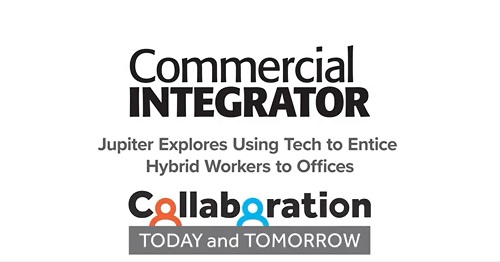CI: Help us understand the current landscape of hybrid work.
Justin Shong: We know we’re going to need to go hybrid. We know the days of ordering people back to the office, 8am to 5pm, five days a week, are gone. And the companies that are trying to do that are having a very difficult time of bringing back their entire workforce. And you still kind of see The Great Resignation happening and echoing through the economy, which has happened over the last year or so.
So, our feeling — and what I’m hearing from a lot of our partners and smart people in the business — is this: We have to entice people to come back to the office. We can’t order them. Because, if we order them, they’re going to go be beat farmers, or they’re going to go to a company that lets them work remote. There are a lot of options, and it’s a seller’s market in terms of being a job hunter these days. So, we must make them want to come back to the office because it gives them those productivity gains. One plus one equals three when we’re working together, and it doesn’t when we’re working remotely.
So, how do we get back in the office? Jupiter is just one small piece of a bigger answer, but we feel it’s important to give people the tools that make them feel like the effort of coming into the office is adding to their productivity. It’s helping their team…helping their projects…helping them personally because they’re learning from their peers and they’re growing. It makes them more marketable on the next job, for the next promotion or as a person. So, the tools to pull them back in are the most important thing.
CI: What are the optimal platforms or best practices, including meeting equity, to entice people back to communal spaces?
Shong: Equity has become the buzzword. And there was a time not too long ago in the AV business when it didn’t really matter what people on the remote end experienced if they could get the audio. But now, we understand that meeting equity is important to all of us. I’ll use a couple of examples. Product management and marketing may be in the office different days — for example, Monday and Wednesday, Tuesday and Thursday. But those two teams work together extensively. So, we want them to be able to be virtually together even when they’re physically apart. And Jupiter’s a piece of that. We feel it’s important to give them a platform to have that experience.
Our 21:9 aspect ratio Pana family of displays comes in different sizes, both interactive and noninteractive. We feel they give people the best experience…an immersive experience. It’s the best experience from an integration standpoint because it’s a single display, single mount, single power supply, single source. And I think we’ve been validated by Microsoft with their EMTR guidance coming out recently. They’re suggesting that 21:9 aspect ratio is really the optimal aspect ratio for an EMTR meeting. And it’s bringing back that “people plus content” that we sort of lost when we took desktop platforms and put them on a monitor on the wall where, as soon as you shared content, you lost the faces. In the new paradigm, you still want to have that eye-to-eye contact while sharing data. This size and form factor give us the best opportunity to do so.
From the return-to-work standpoint, it gives employees a cool new toy. It has a little different look. It has some ergonomics where people of different heights can get to the top and bottom of the monitor and use all the pixels and all the workspace on our interactive versions. They can really take advantage of some of the tools that are out there from the collaboration platforms.
CI: Jupiter has really been a pioneer in embracing 21:9. Share some closing thoughts on that element of things.
Shong: It’s really about the aspect ratio. Jupiter is the only company that is solely focused on 21:9. We have bought into this form factor…this aspect ratio…wholeheartedly. We’ve got a family of products; there are five of them out there today. And there’ll be more coming, and they’ll all be 21:9 aspect ratio. We believe that’s the best way to consume the information. And there is nobody else out there who is doing that. The point is changing the way people work, and we’re solely focused on that.










